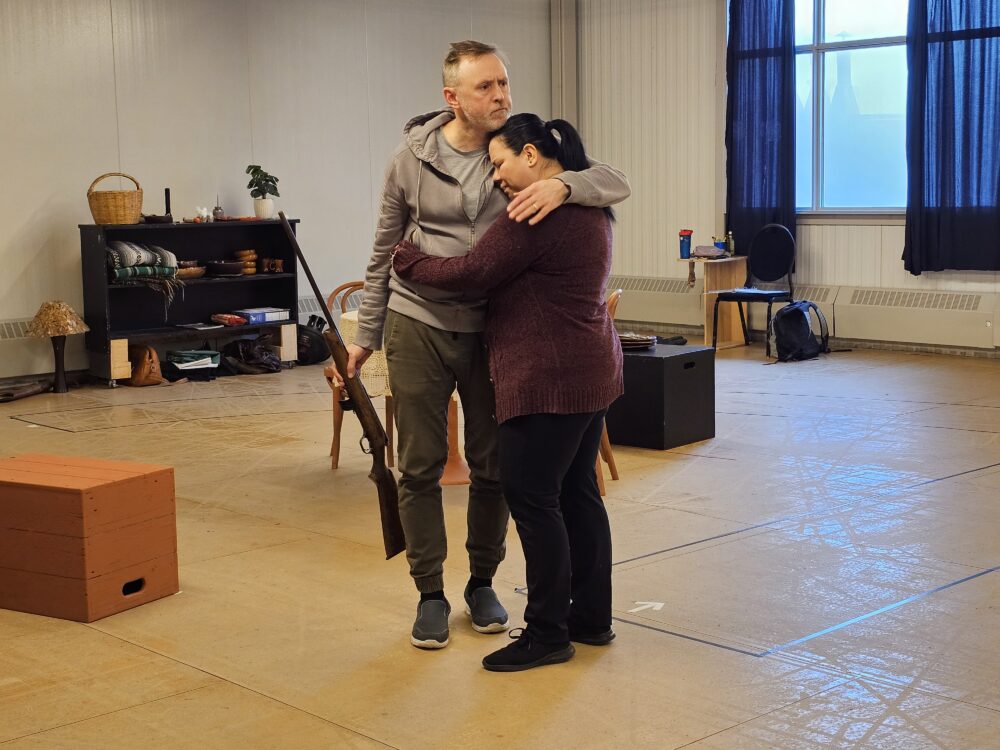Live theatre has the power to move us through the silliest trifles and the deepest losses. This is How We Got Here manages moments of humour with a chuckle here and there, but mainly navigates some of the darkest moments of grief and loss. While it is not perfect, it is a powerful and heart-wrenching story of two parents who have lost a child to suicide.
The story begins with a legend of a fox who tells many stories but has lost his own. This legend is interspersed throughout a non-linear tale of Paul (Danny Knight) and Lucille (Kathleen MacLean) who have reached the one-year anniversary of their son’s passing. The couple has split up, and Lucille is spending much of her time and grief outside her sister’s home in the company of a wild fox. Bouncing through the timeline of events and the legend of the fox, the story extrapolates on the longing and pain of losing a loved one to suicide and depression.
The performances from the whole cast are superb despite a pair of line stumbles near the beginning at the Thursday preview. Once the nerves were out, they hit their stride and brought tears to the audience throughout the show. MacLean began her performance with a heart-breaking monologue about all the wonderful and terrible things that could not have happened to her as a mother; this denial seemed the only way to cope with the loss of her son.
Paul’s best friend and Lucille’s brother-in-law Jim (Skye Brandon) gave a similarly powerful monologue near the end which detailed the account of finding his nephew’s body. Jennifer Dawn Bishop brought spice and energy to a difficult and depressing story as Lucille’s sister, Liset, and Danny Knight’s presence captured the contradictory and simultaneous explosion and implosion of a father’s grief.
The last character to mention is the fox, which was creatively displayed through the use of lights. It journeyed across the stage in a sparkling trail and landed on different areas as an immobile image. While interesting and artistically admirable, it felt a little too isolated from the rest of the production.
Keith Barker’s script contains moments of unparalleled beauty wrapped in a cloak of anguish. That being said, the characters — particularly Jim — also drift between well-rounded and stereotyped. Some scenes present Jim and the rest of the characters as layered and complex people. Other scenes present stereotypes of homophobia, religious judgement, and toxic masculinity so that it can be a source of humour and a way to challenge those existing conceptions of humanity. This somehow functions and feels forced at the same time.
These criticisms aside, This is How We Got Here will hit you in the chest. It is an important story that follows the road of grief far enough to see the hope of healing. Lucille, near the end of the play, says “Our stories live in the people around us.” In no way does the production minimize the suffering of loss, but it includes a sparkle of hope that recognizes the impact that people have on each other.
This is How We Got Here runs on the Persephone mainstage from January 31 to February 11. Tickets are available at the Persephone box office and online at www.persephonetheatre.org






